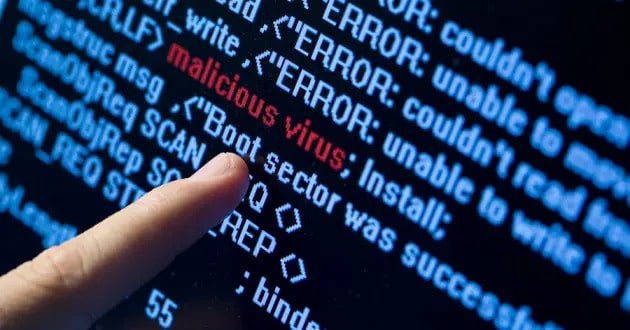Artificial intelligence (AI) was commonly shown in sci-fi movies rather than in our daily lives, but a lot has changed as the pace of technological developments increased dramatically.
Artificial intelligence is now used for countless devices that we come across every single day, from changing camera quality, to face recognition and virtual assistants on our phones.
Even though the term Artificial intelligence was created with a hope to improve people’s lives, it’s rather been creating challenging situations for cybersecurity experts across a wide range of industries.
Cyberattacks using AI technology are so sophisticated and unusual that traditional security tools can fail to recognize and eliminate these threats.
In this blog, we will discuss the different types of AI-powered threats and some examples of these threats to look out for.

AI Phishing Attacks
Older phishing emails were easier for people to recognize and distinguish the differences because the sender was not particularly careful. However, cyber attackers have learned to use AI to craft emails that are tailored specifically to an individual’s characteristics and circumstances.
AI-powered email attacks can also exchange emails like a person to make the recipient believe a real conversation is happening. AI bots may respond directly in an email, or they could use a chatbot through social media.
An unsuspecting user might see the thread and trust the source, eventually opening the link or attachment in the email. This could open the door to multiple attacks across a network with viruses.
It is important to note that spearphishing is usually the go-to for phishing attacks. Spearphishing targets one specific person and usually one with influence, like the CFO or Director of Operations.

Regular hackers will use social engineering to gather information about the individual and their business by following social media profiles and discovering anything else they can online.
With AI-powered spearphishing, that information gathering is multiplied dramatically by the huge volume of data and content AI can search and compile quickly.
AI-Powered Malware
Traditional malware in a sense is dumb. It is a set of pre-created, fixed code that tries to sneak past antivirus clients. To sneak past defenses, AI-powered malware can think for itself, to an extent.
AI uses deep learning, for instance, an AI algorithm fed with sample data creates its own rules. For example, if an AI program is shown enough pictures of a specific person, it will be able to detect that person’s face in new photos.
Applied to malware AI can perform tasks that are impossible with traditional software structures. This makes it difficult for basic antivirus clients to identify malware that doesn’t follow traditional rules.
AI-powered malware is still in its infant stages; cybercriminals are simply not using it very often. In this case, keeping a solid antivirus client in place is still important, even for unknown AI threats.
An excellent antivirus client should include emergency and periodic scans, frequent updates, and it should have a comfortable user interface. It should be light on resources, so it does not slow down your computer’s other important programs.
Lastly, antivirus clients should be affordable, but not so cheap that you miss out on important features.

Deepfakes
As data can be gathered from millions of users across the world, there’s a great chance that this could be misused for different purposes.
Deepfake technology can seamlessly stitch anyone in the world into a video or photo they never actually participated in, or by creating people that don’t even exist.
One method is through GAN — short for Generative Adversarial Network — which engages in face generation. GAN uses a set of algorithms to train itself to recognize patterns. This training helps it learn real characteristics to be able to produce fake images.
There also are AI programs known as encoders that are used in face-swapping and face-replacement technology. This process runs thousands of face shots of two people through an encoder to find their similarities.

A decoder, or second AI algorithm, then retrieves and swaps these face images to enable someone’s real face to be superimposed onto another person’s body.
Corporations worry about the role deepfakes could play in scams. For example, deepfake audio coming from fake CEOs could be used to scam employees into sending money to hackers. Deepfakes could be used in identity theft attempts, make fraudulent online payments, or hack into personal bank accounts.
Wrapping Up – Protect Yourself
Artificial intelligence is a double-edged sword that can be used as a solution or as a weapon by hackers.
A lot of these threats are unique and there isn’t a huge amount of information about them, but you can still apply some of the similar cyber security practices to protect yourself from AI-powered attacks.
With spear-phishing, there are basic patterns that you can identify as red flags when dealing with these scams. The most common red flag is if the sender has an incorrect email address or one that is slightly similar but different.
These emails will almost always include some call to action or a sense of urgency. The email will usually say “ASAP” or have a strict deadline.
Investing in a solid antivirus program is crucial because antivirus clients can regularly scan for security definitions. These security definitions inform software if there are new forms of malware that are attacking certain programs.

Antivirus agents will typically warn of any potential threats if a file is downloaded, or an unsafe website is accessed.
When looking out for deepfakes, there are some easy signs to tell if a video has been created or doctored. Look for unnatural eye movement, facial expressions, body movement, or coloring.
You may spot facial morphing or image stitches if someone’s face doesn’t seem to exhibit the emotion that should go along with what they’re saying.
Deepfake videos are often blurred and have inconsistent noise or audio. If possible, try to slow the video down on your phone or computer, or if you have some video editing software. Check for images that look unnatural when slowed down, for example, zoom in on the lips of a speaker to see they’re talking or if it’s bad lip-syncing.
















